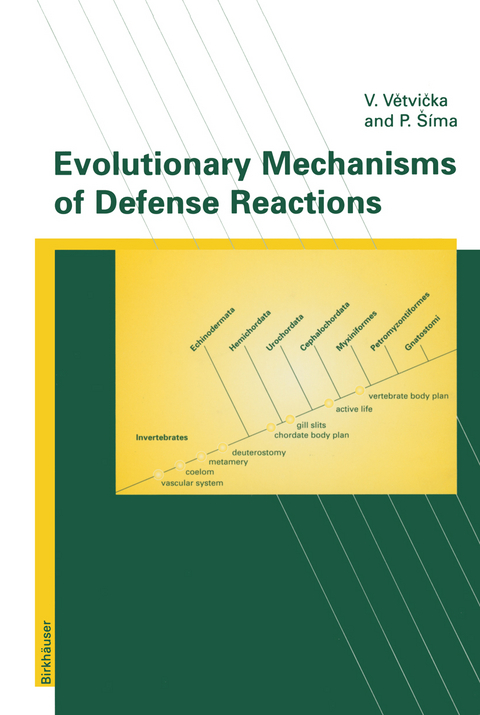
Evolutionary Mechanisms of Defense Reactions
Seiten
2012
|
Softcover reprint of the original 1st ed. 1998
Springer Basel (Verlag)
978-3-0348-9793-8 (ISBN)
Springer Basel (Verlag)
978-3-0348-9793-8 (ISBN)
At present, we do not fully understand at what stage of the evolution of living matter the first traces of defense reactions occurred. We even do not fully understand how and why immune systems reached their contem porary state in advanced vertebrates and man. It may be expected that in the near future these questions will be answered by comparative and develop mental biology. Together with an extraordinary explosion of our knowledge about immunity of mammals including man, an increase in the interests concerning origin and development of immune mechanisms at lower stages of the phylogeny can be observed. The search for simple types of immune mechanisms in less complex but still evolutionary successful animals is promising and may contribute to better understanding of highly complex immune adaptive responses in mammals. It is important to note that comparative and evolutionary immunology differs greatly from other branches of biomedical science. Apart from immunology and molecular biology, a specialist in this discipline has to be familiar with every detail of taxonomy, comparative anatomy, physiology, embryology, and even with the phyletic relationships of animals. Probably no monography could deal with the entire animal kingdom, because, in many cases, the insights into questions about immune mecha nisms of many animal groupings or phyla, and their possible evolutionary implications, are unknown or just now beginning to take shape. For the moment, our knowledge on such matters relies upon reconstructions of ideas that we have deduced from studies on members of relative taxa.
References.- Animals at the cell-aggregate body organization.- Porifera.- Diblastic animals.- Coelenterata.- Protostomes.- Annelida.- Arthropoda.- Chelicerata.- Crustacea.- Insecta.- Mollusca.- Deuterostomes.- Echinodermata.- Chordates/Urochordata.- Chordates/Vertebrates/Agnatha.- Chordates/Vertebrates/Chondrichthyes.- Chordates/Vertebrates /Osteichthyes.- General conclusions.- References.
| Erscheint lt. Verlag | 28.10.2012 |
|---|---|
| Reihe/Serie | Advances in Life Sciences |
| Zusatzinfo | XI, 201 p. |
| Verlagsort | Basel |
| Sprache | englisch |
| Gewicht | 381 g |
| Themenwelt | Sachbuch/Ratgeber ► Natur / Technik ► Garten |
| Medizin / Pharmazie ► Medizinische Fachgebiete | |
| Studium ► Querschnittsbereiche ► Infektiologie / Immunologie | |
| Naturwissenschaften ► Biologie ► Genetik / Molekularbiologie | |
| Schlagworte | Biology • Defense Mechanism • Development • Evolution • evolutionary biology • immune system • immunology • Pathology |
| ISBN-10 | 3-0348-9793-6 / 3034897936 |
| ISBN-13 | 978-3-0348-9793-8 / 9783034897938 |
| Zustand | Neuware |
| Informationen gemäß Produktsicherheitsverordnung (GPSR) | |
| Haben Sie eine Frage zum Produkt? |
Mehr entdecken
aus dem Bereich
aus dem Bereich
Buch | Softcover (2023)
Lehmanns Media (Verlag)
19,95 €


